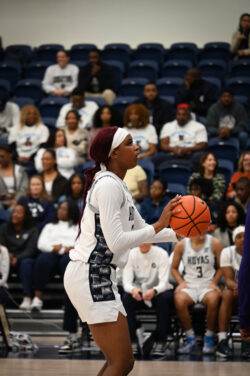Endorsement deals—they have been the crux of NBA player popularity for over 20 years, since the inception of the Air Jordan brand. Throughout his career, Michael Jordan was a model of excellence for athletes; winner, role model, and entrepreneur. Nike pushed these obvious admirable qualities but also humanized Jordan. After all, to optimize sales on the Air Jordan, it had to tug on the average American’s heartstrings.
Nike masterfully approached the campaign, highlighted by a somber commercial where Jordan said, “I’ve failed over and over and over again in my life, and that is why I succeed.”
Fast-forward almost two decades, to when Adidas launched a similar campaign this week. The series, which features the Bulls’ Derrick Rose, shows the former NBA MVP recovering from a devastating ACL surgery. It puts Rose in the context of Chicago and the city’s gloomy outlook once its superstar went crumbling to the ground.
But it stands in stark contrast to Rose and how he was perceived early on in his career. A shady recruitment from John Calipari, a reported fake SAT score, and an early-career perception that he wasn’t good for anything except scoring.
Winning changed all of that for Rose. It made him relevant in one of the biggest basketball markets in the nation and put all of the controversies to the side. His endorsement with Adidas enhanced the popularity that winning started.
Now, while he’s out of the spotlight, Adidas is standing by him and keeping him relevant. Of course, this is good for the company as well, seeing as they come across as a loyal endorser, one that stands behind its athletes. But it’s a product of the times. The shoemaker has one other feature NBA athlete—some guy named Dwight Howard—but we haven’t heard a peep out of his affiliation with the company in quite some time.
That’s for good reason, as the sensitive superstar completely mutilated his love affair with Orlando in Humphries/Kardashian proportions. What’s more, he ruined his national image as a humble, affable superstar by whining and lying his way out of Orlando. Those are irreconcilable steps that Adidas can’t, by any means, fix on their own.
Still, as history has shown, players have the ability to rebound from even the most dire public relations mishaps. Kobe Bryant lost the vast majority of his endorsement deals in 2003 when he was accused of sexual assault. Though the charges were later dropped, Bryant’s popularity hit an all-time low and he became simply unmarketable for Nike and his other endorsers—until he started winning again, that is. That didn’t happen for another three years, but once Bryant started going deep into the playoffs, the popularity soared once more.
It’s a similar ascent to LeBron James’s. While he wasn’t committed of a crime, Cleveland’s reaction to his departure for South Beach in 2010 certainly gave off that impression. Cavaliers fans burned James jerseys, disowning and vilifying their former hometown hero.
Again, this time, Nike did damage control. They humanized LeBron after the dust had settled a bit. He was still the most hated athlete in the world, but the shoe giant took an apologetic approach to his ads. LeBron was the Nike moneymaker; they could not afford to have that go by the wayside.
Two years later, James is an NBA champion and his brand is once again the most popular brand in the Nike lineup, right up with Bryant. Again, winning cured all—removed the choke moniker from LeBron and completed his reentrance into the most popular players in the league.
Of course, with all of these players, Bryant and James especially, the drop in popularity was because of poor judgment. Bryant should have been more judicious in that Colorado hotel room in 2003, while James should have made his decision in less dramatic and entitled fashion.
But Jordan set the trend for humanizing athletes. Image repairing extends to other sports, as well. Ray Lewis remains an UnderArmour staple despite being accused of murdering a man a little over a decade ago. Success on the field seems to be a cure-all in our sports society.
Is it a good thing? Probably not—young children could grow up rooting for these superior athletes and accepting all of their shady practices on the side as acceptable. But that’s just one perspective. Nike and Adidas invest hundreds of millions into players like James and Rose; clearly they want to milk these athletes for all the revenue they’re worth. Whether the manner they portray these athletes in that pursuit is accurate, therefore, is a moot point. (cosmolex.com) It’s all about the money.




